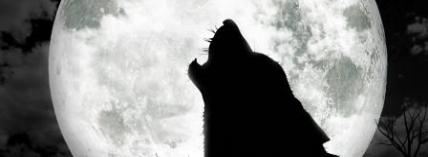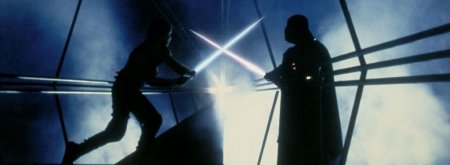Horror and 3D
Rachel Helen Smith considers two recent developments in film: horror and 3D.
Karl Marx famously claimed, "Religion is the opiate of the people". For the 21st century, film is the opiate of the people.
Film seduces us to switch off our brains and immerse ourselves in a colourful, glossy, life-sized narrative. Without wanting to undermine the genuine pleasure that comes from relaxing in front of a good film, I want to encourage us to re-engage our brains and to critically consider modern cinematic output. As Neil Postman writes in his book Technopoly, the surrender to technology "is a state of culture" but "is also a state of mind". To help us do this, I will sketch out the implications of two recent developments in film that I consider to be the most significant: the rise of a new genre of horror, and the advent of 3D films in the commercial market.
The Rise of Horror
First, I will discuss the more insidious development of the two – the rise of a type of horror film that seems to demand hyperbole to capture its specific brand of "eyeball poppingly repulsive sadism".
The increasing extremity of the horror genre is an attempt to re-awaken the technologically dulled emotions of an audience programmed to ‘switch off’ in front of the big screen. Leading the way is Quentin Tarantino, a man often hailed as the king of gore. His outrageously bloodthirsty movies have become cult pieces, and he has become the spokesperson for a group who push on-screen violence to its limits in order to provoke a reaction. These days, Tarantino is largely accepted by the establishment, as new directors arrive to fill his role on the cutting edge. But he has had a remarkable impact on the British film industry, helping to make extreme violence more acceptable to the mass market.
He celebrates this as the most effective means by which a director can control the emotions of an audience: "I feel like a conductor and the audience’s feelings are my instrument". Audiences, it would seem, hand over not only their brains, but their hearts too.
Reality and Fantasy
However, his films often keep their distance from reality. When blood spurts out of wounds it does so as though through a hose, and in his famous pair of Kill Bill films some scenes are replaced by animated manga (Japanese comic book cartoon) sequences.
In Tarantino’s own words, "You know you’re watching a movie", because the action "is definitely not taking place on planet Earth". Jenny McCartney, writing for the BBC, notes the important "distinction between violence which is clearly fantastical in origin" and "that which is realistic and sadistic in tone".
Interestingly, the best examples of this second kind are not niche interest horror extravaganzas, but popular mainstream hits like Casino Royale (James Bond) and The Dark Knight (Batman). These films are hugely successful and, thanks to the 12A rating, it is young people who are now able to watch ‘previously unthinkable’ acts played out on the big screen, with a side of popcorn. It is not only Christians who are concerned about the possibility that they will "taint [children’s] fundamental vision of the world and adult norms of behaviour" (McCartney).
Eroding Moral Categories
These films no longer depict a desperate struggle between good and evil. Rather, as with The Dark Knight, they erode any sense of such moral categories, instead pitting good against chaos.
The effect is utterly dehumanising, as is the case with the villain of The Dark Knight. The Joker was famously played by the late Heath Ledger, and his bawdy message is that "the only sensible way to live in this world is without rules". Not, note, the made-up world that constitutes the comic book backdrop of the film, but the same world that the audience lives in. Perhaps it is more glamorously dark, but, nonetheless, the film intentionally creates a world as believable and recognisable as possible.
Three Dimensions
In this sense, the second phenomenon that I will discuss is not so different. The new fascination with a third dimension in film is also an attempt to come closer to the reality of the audience’s world. Avatar is currently the all-time highest-grossing film worldwide – testament to the novelty of the new form as well as the excitement of the new cinematic experience. 3D films are an attempt to replicate the shockingly dramatic experience that cinema once was.
The first ever publicly shown film was Arrival of a Train at La Ciotat, shot by the Lumiere brothers in 1895. An oft-rehearsed anecdote claims that a number of audience members ran from the screen, terrified by the train coming towards them and startled by a new form that they did not understand. Film directors have been trying desperately to replicate the effect ever since, and it seems that, with the advent of 3D film, cinema has found a way to make us duck in our seats again.
Involuntary Response
What made the Lumiere brothers’ film so powerful was the fact that it occupied an uneasy position between the real and the fictive. People were aware that they were not standing in the path of an oncoming train, but were seated in a theatre. Nonetheless, unfamiliar with the form, they made an involuntary, physical response to the perceived danger that the train presented. 3D film presents us with a similar sense of virtual reality.
If 3D film and a new extremity in the horror genre is what we have so far experienced, what we must be prepared for is what will be hitting our screens later in 2010 — the amalgamation of the two.
Upcoming Horror
Saw 3D is scheduled for release in October 2010. With the Saw films, as with so many others in their genre, the first inspired a second, which leads on to a third, each more audaciously sadistic than the last. This year sees the release of the seventh film in the series, which follows the grizzly traps left by Jigsaw to test the physical and psychological resistance of his victims. The continuation of the series is proof both of its ingenuity, and its failure. None of the films can satisfy our desire to be shocked by cinema. Some audience members fainted during Saw III. But judging by ticket sales, it did not stop them going back for more. Each film may be horrifying at the time, but simply reveals a desire to see something even more extreme, thus guaranteeing the box-office success of the next instalment. The Saw films do not send fans screaming from the cinema, they send them screaming into the queue for the next episode. Just a few weeks ago, there was great online excitement after the first two behind-the-scenes images from the film were leaked on Wikipedia. The media hype shows no signs of slowing down.
We are not quite at the stage where we can enjoy a Saturday night out at the ‘feelies’ as Huxley prophesied in 1932 (A Brave New World). But we are edging ever closer. Writing about the Saw films for The Guardian, Jane Graham commented: "It’s possible that watching a woman have her ribcage torn apart or seeing someone drilling into a man’s temple isn’t your idea of fun – but then again, if you’re male and aged between 16 to 24, it’s entirely likely that it is."
If that is the case, in October you may be enjoying the sight in 3D that seems "far more real than reality", thanks to ever improving technology. The real world and the fictive world are once again beginning to overlap before our very eyes – eyes that are still, for now, covered by ridiculous 3D glasses.
Who is Getting Who?
Perhaps you plan to go and watch. Or perhaps, like me, you cower behind a cushion at the very thought. Either way, we must begin to think seriously about the issues that modern cinema presents to us right now. Otherwise, we may be left to echo Dick Gowdwin in Robert Redford’s 1994 film Quiz Show:
"I thought we were gonna get film. The truth is, film is gonna get us."
© 2010 Rachel Helen Smith
This article appears here by the kind permission of Rachel Helen Smith. It first appeared in the September 2010 edition of Evangelicals Now.



